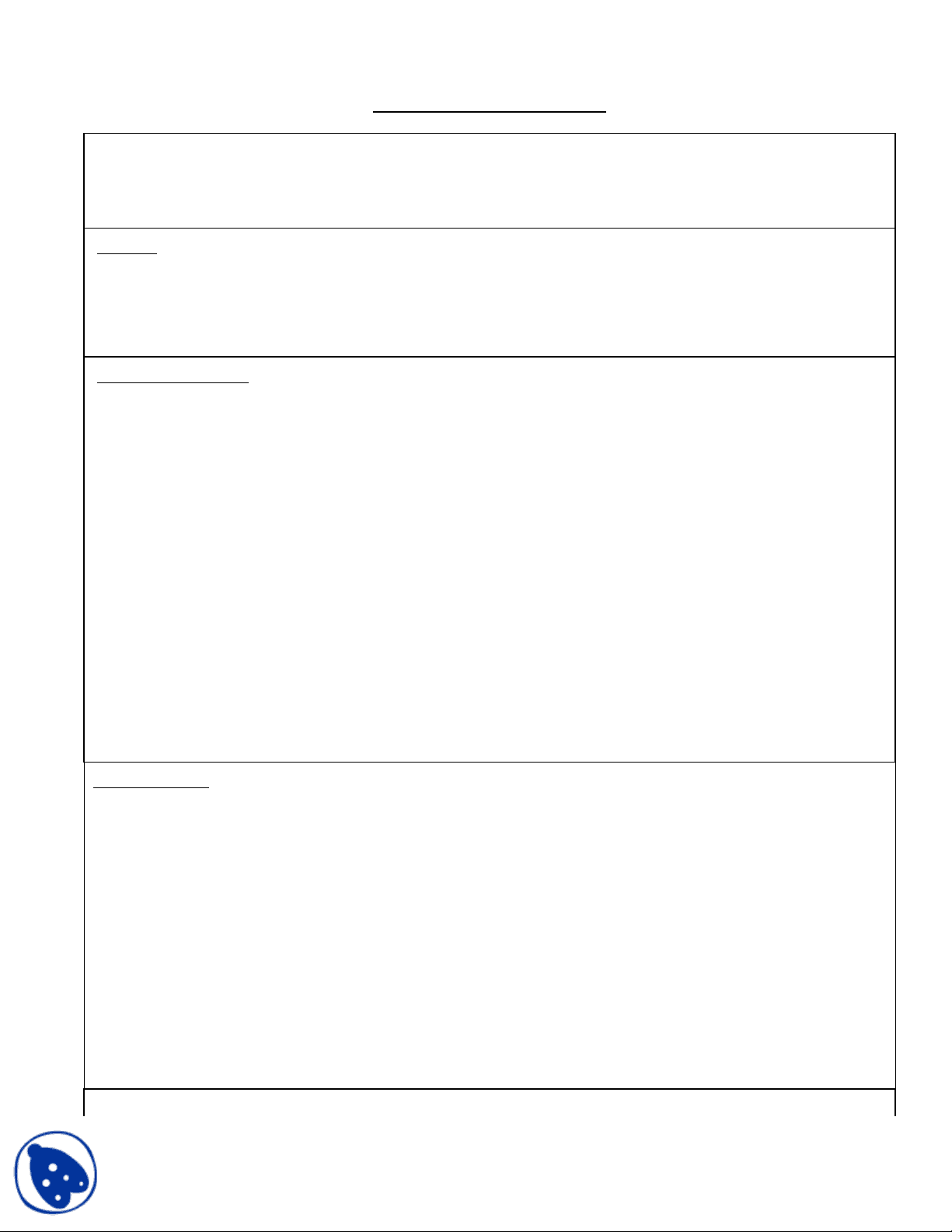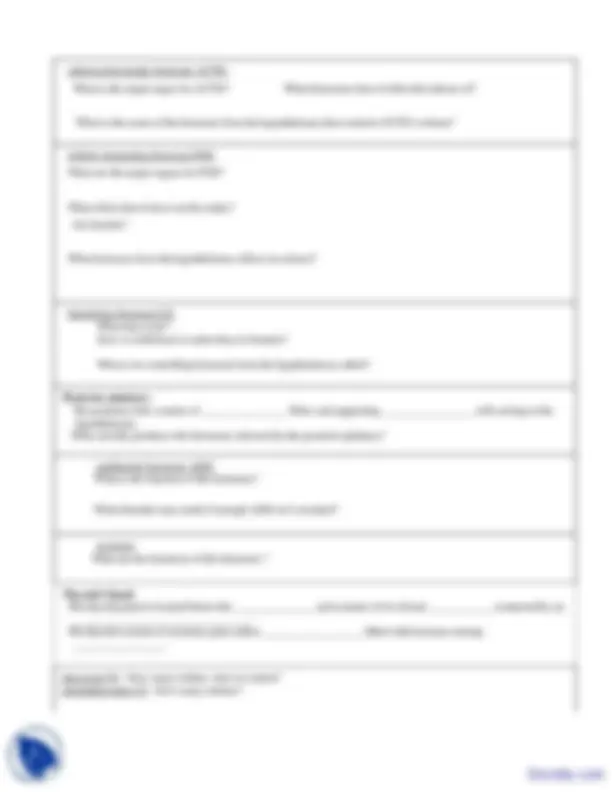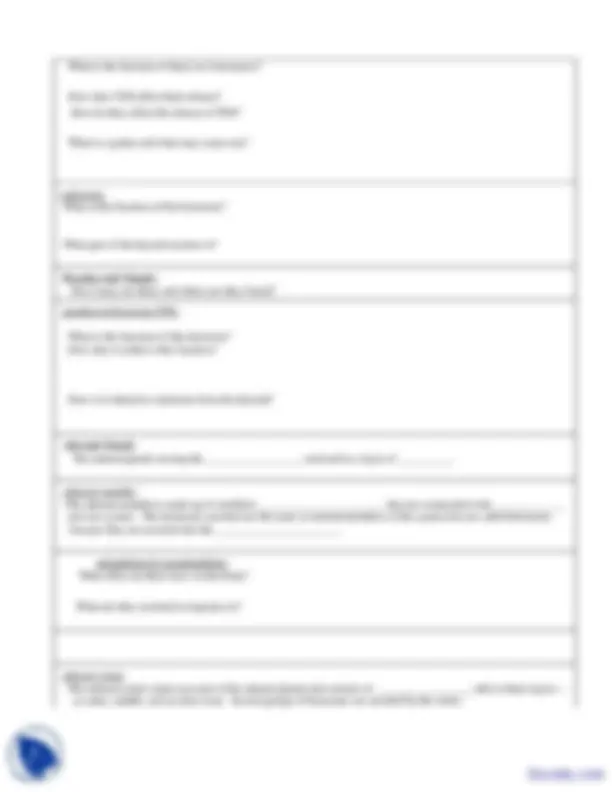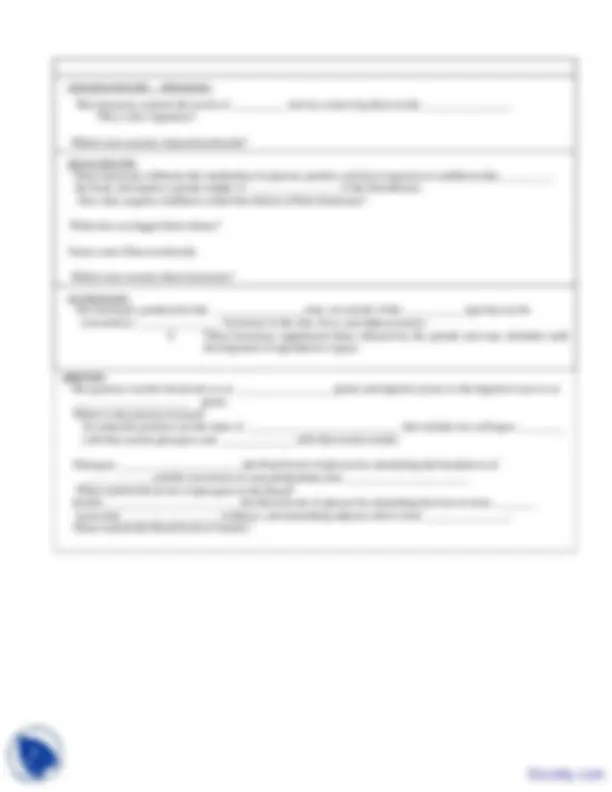





Study with the several resources on Docsity

Earn points by helping other students or get them with a premium plan


Prepare for your exams
Study with the several resources on Docsity

Earn points to download
Earn points by helping other students or get them with a premium plan
Community
Ask the community for help and clear up your study doubts
Discover the best universities in your country according to Docsity users
Free resources
Download our free guides on studying techniques, anxiety management strategies, and thesis advice from Docsity tutors
This lecture is taken from quiz of Physiology and Anatomy. Key important points are: Endocrine System, Hormonal Mechanisms, Types of Chemicals, Blood Stream, Body Fluids, Cell Membranes, Name of Second Messenger, Hormone Control, Negative Feedback Systems, Pituitary Gland
Typology: Exercises
1 / 7

This page cannot be seen from the preview
Don't miss anything!




Endocrine System:
hormone: What types of chemicals can hormones be? What is the tissue called that hormones affect?
hormonal mechanisms:
__________________ hormones are lipid-soluble and can pass through cell membranes. Their receptors are located in the target cell's ________________________. The hormone-receptor complex binds with the ____________ and activates specific _________________ that, in turn, direct the synthesis of specific __________________.
______________________ hormones combine with receptors in target cell _______________; the receptors have a ____________________ site and a/an _____________________ site. The hormone-receptor complex (as first messenger) triggers a cascade of biological activity. What happens after the complex forms?
What is the name of the second messenger?
Prostaglandins are locally-produced lipids that affect the organ in which they are produced with a variety of effects. What are some of these effects?
hormone control: There are several ways in which hormone release is very closely regulated. All of these mechanisms use negative feedback.
Release of __________ hormones from the hypothalamus controls secretions of the __________ ___________. The ____________________ system influences certain endocrine glands directly with impulses. Other glands respond directly to changes in the __________________ fluid composition.
Negative Feedback Systems – Explain in general how negative feedback works.
How would this function in the above three situations?
Pituitary Gland:
The pituitary gland is attached to the base of the brain and has a front lobe called the _____________ ___________ and a rear lobe called the __________________ __________________. The brain controls the activity of the pituitary gland in two ways. Releasing hormones from the ____________________ control the secretions of the anterior pituitary and are carried in the bloodstream by _________________________ veins. The posterior pituitary releases hormones into the bloodstream in response to nerve impulses from the _______________________.
Anterior pituitary: The anterior pituitary consists mostly of ___________________ tissue arranged around blood vessels and enclosed in a capsule of collagenous _________________________tissue.
How many hormones does it secrete? What function do most of them have in common?
growth hormone GH: What is the function of GH?
What factors influence growth besides GH?
What hormones from the hypothalamus control the levels of GH?
What disorders may result from a lack of or too much GH?
prolactin PRL: What is the function of PRL?
What is its target tissue?
What hypothalamic hormones affect it?
thyroid stimulating hormone TSH: What is the function of TSH? (its target organ?)
What hypothalamic hormones affect its release?
How are these hormones from the hypothalamus regulated?
What is the function of these two hormones?
How does TSH affect their release? How do they affect the release of TSH?
What is a goiter and what may cause one?
calcitonin: What is the function of this hormone?
What part of the thyroid secretes it?
Parathyroid Glands: How many are there and where are they found?
parathyroid hormone PTH:
What is the function of this hormone? How does it achieve this function?
How is it related to calcitonin from the thyroid?
Adrenal Gland: The adrenal glands sit atop the __________________ enclosed in a layer of __________.
Adrenal medulla: The adrenal medulla is made up of modified ________________________ that are connected to the _____________ nervous system. The hormones secreted are the same as neurotransmitters of this system but are called hormones because they are secreted into the _______________________.
epinephrine & norepinephrine: What affect do these have on the body?
What are they secreted in response to?
adrenal cortex: The adrenal cortex makes up most of the adrenal glands and consists of __________________ cells in three layers— an outer, middle, and an inner zone. Several groups of hormones are secreted by the cortex.
mineralocorticoids - aldosterone: This hormone controls the levels of __________ ions by conserving them in the ________________. Why is this important?
Which zone secretes mineralocorticoids?
glucocorticoids: These hormones influence the metabolism of glucose, protein, and fat in response to conditions that __________ the body and require a greater supply of _________________ in the bloodstream. How does negative feedback control the release of these hormones?
What else can trigger their release?
Name some Gluccocorticoids.
Which zone secretes these hormones?
sex hormones: Sex hormones, produced in the _________________zone, are mostly of the ___________ type but can be converted to ________________ hormones in the skin, liver, and adipose tissues. b. These hormones supplement those released by the gonads and may stimulate early development of reproductive organs.
pancreas : The pancreas secretes hormones as an __________________ gland, and digestive juices to the digestive tract as an ______________________ gland. Where is the pancreas located? Its endocrine portions are the islets of _____________________________ that include two cell types--________ cells that secrete glucagon, and ______________ cells that secrete insulin.
Glucagon _______________________ the blood levels of glucose by stimulating the breakdown of _____________and the conversion of noncarbohydrates into _______________________. What controls the levels of glucagons in the blood? Insulin _________________________ the blood levels of glucose by stimulating the liver to form ________ increasing __________________ synthesis, and stimulating adipose cells to store ________________. What controls the blood levels of insulin?